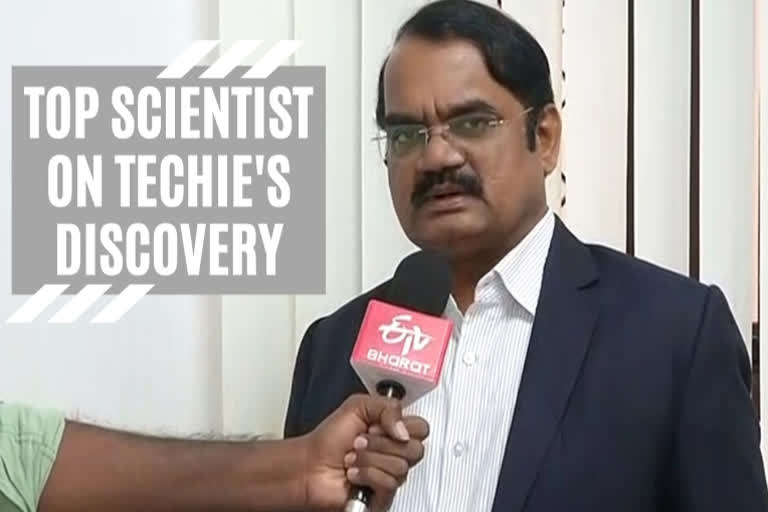Chennai (Tamil Nadu): Project Director of the Chandrayaan-1 mission, Dr M Annadurai on Tuesday said that Chennai based software engineer Shanmuga Subramanian helping US space agency NASA to discover Chandrayaan-2's debris will create enthusiasm among youngsters to examine space data.
Speaking to ETV Bharat on the development, Annadurai said that the good work by Subramanian will inspire youngsters outside ISRO to examine and study space data, just like how freelance observers actively pursue such developments in USA and UK. "This is the positive aspect of this entire episode," he said.
-
The #Chandrayaan2 Vikram lander has been found by our @NASAMoon mission, the Lunar Reconnaissance Orbiter. See the first mosaic of the impact site https://t.co/GA3JspCNuh pic.twitter.com/jaW5a63sAf
— NASA (@NASA) December 2, 2019 " class="align-text-top noRightClick twitterSection" data="
">The #Chandrayaan2 Vikram lander has been found by our @NASAMoon mission, the Lunar Reconnaissance Orbiter. See the first mosaic of the impact site https://t.co/GA3JspCNuh pic.twitter.com/jaW5a63sAf
— NASA (@NASA) December 2, 2019The #Chandrayaan2 Vikram lander has been found by our @NASAMoon mission, the Lunar Reconnaissance Orbiter. See the first mosaic of the impact site https://t.co/GA3JspCNuh pic.twitter.com/jaW5a63sAf
— NASA (@NASA) December 2, 2019
Earlier on December 2, NASA claimed to have found the crash site and debris of India's Chandrayaan-2 Vikram moon lander following a tip from Indian space enthusiast Shanmuga Subramanian, who examined pictures of the area of the moon taken by a US orbiting camera.
The site was located by Subramanian, who on his own scoured the pictures taken by the Lunar Reconnaissance Orbital Camera (LROC), NASA and Arizona State University announced on Monday confirming the find.
Read: NASA finds Vikram Lander, releases images of impact site on moon surface
Elaborating on the find, Annadurai said that there was a high probability that the debris was indeed from Chandrayaan-2, as based on the data and imagery before and after its scheduled lunar landing, it can be inferred that the likely crash site is actually very close to Vikram's intended landing site.
The top space scientist added that considering the weight, velocity and impact of the likely crash, it was highly possible that the lander was broken into pieces, as changes in terrain could be observed based on the imagery.
Questioned on the limited data released by ISRO on the mission, Annadurai said that it is the space agency's nominal data policy, wherein the principal scientist first scours through the data for six months to one year before releasing it into the public domain.
Read: 'Our own orbiter had located Vikram,' ISRO chief counters NASA claim



